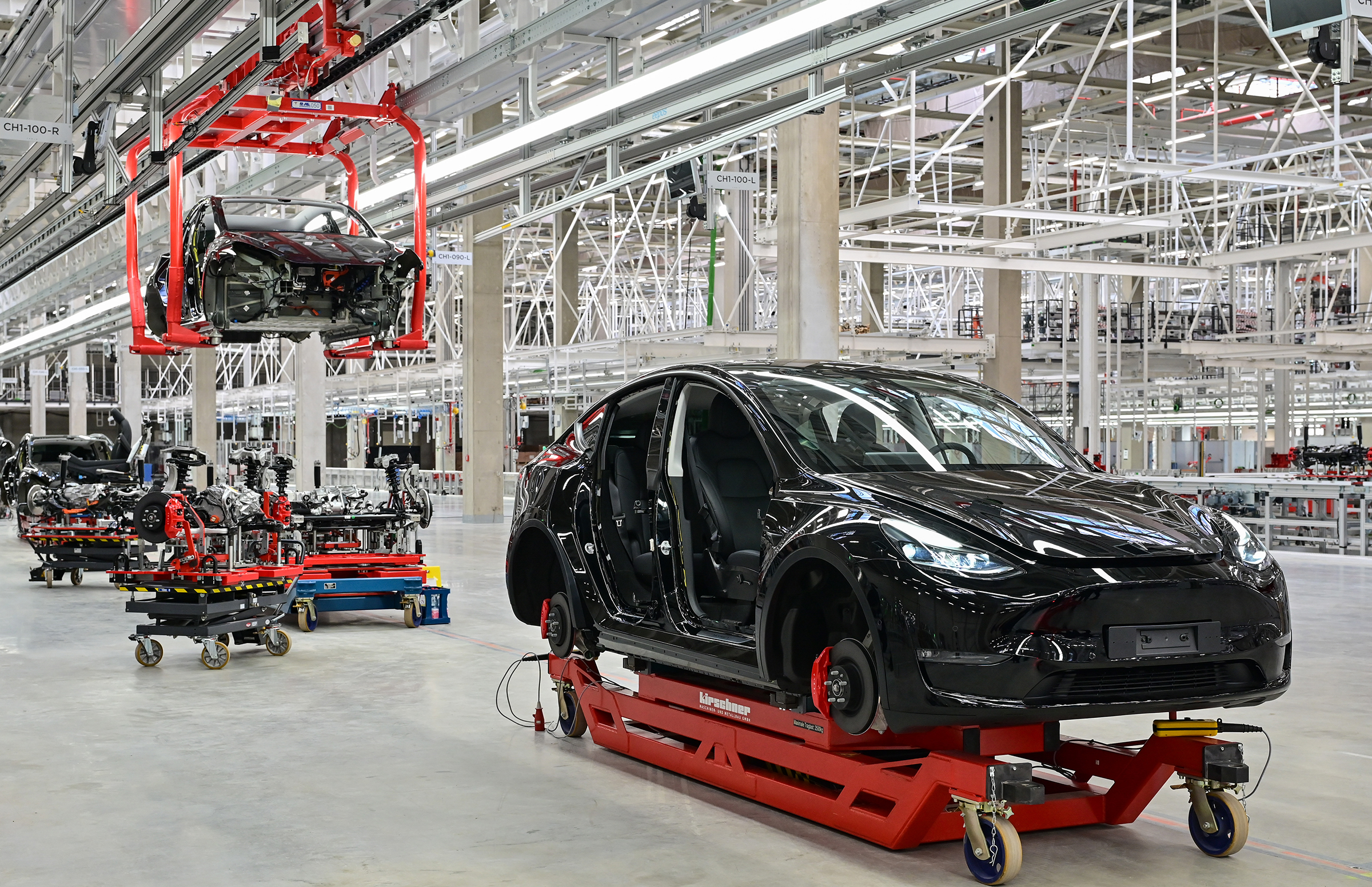
Tesla has recently stepped back from its progressive gigacasting method of manufacturing, which would have allowed for entire vehicle underbodies to be produced in one piece. This change in strategy, as reported by two sources familiar with the matter, reflects a broader pattern of scaling back amidst declining sales and increasing competition.
Gigacasting, a method Tesla has championed, involves using massive presses to die-cast large sections of a vehicle’s underbody, traditionally made up of hundreds of parts. This method was part of Tesla’s ambition to streamline production and reduce costs significantly.
Last year, the company aimed to implement this process for a new small-vehicle platform, which would create the underbody in a single piece. However, Tesla has now reverted to its previous method—casting the vehicle underbody in three sections. This method involves two gigacasted sections at the front and rear, with a middle section comprised of aluminum and steel frames to accommodate batteries. This approach has been used in their recent models like the Model Y and the Cybertruck.
The decision to halt the one-piece gigacasting, which has not been previously reported, aligns with other cost-cutting measures Tesla has implemented, such as a workforce reduction exceeding 10% last month and the departure of key executives.
These changes indicate a shift in strategy, with Tesla now focusing more on developing autonomous vehicles rather than pushing for significant growth in EV sales—a departure from what many investors anticipated.
The Impact of Halting the Model 2 Development
The sources highlighted that the decision to step back from the one-piece gigacasting occurred before Tesla’s recent decision to halt the development of the Model 2, an affordable new car that would have been the first to use the one-piece gigacasting.
This model, expected to cost around $25,000 and be available in the second half of 2025, was canceled as Tesla adjusted its production strategies, which was revealed in a Reuters report on April 5.
On April 23, following an earnings report that failed to meet expectations, Tesla announced a simpler, more cost-effective plan for producing affordable cars using existing platforms and production lines.
Despite abandoning the Model 2, Tesla continues to develop a self-driving robotaxi based on the same small-vehicle platform. The two sources noted that suppliers are now adapting to the three-piece casting process for the next-generation vehicles.
Experts have noted that gigacasting, while potentially reducing costs in the long term, requires substantial initial investments and presents considerable challenges. The conservative path Tesla has taken is seen as a response to the difficulties it has faced historically with innovative vehicle launches, such as the Cybertruck, which encountered production delays and launched at a higher price point than expected.
Related News:
Featured Image courtesy of Patrick Pleul/picture alliance via Getty Images
